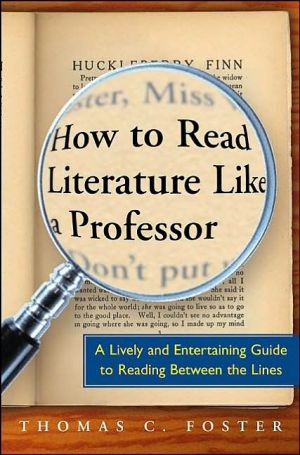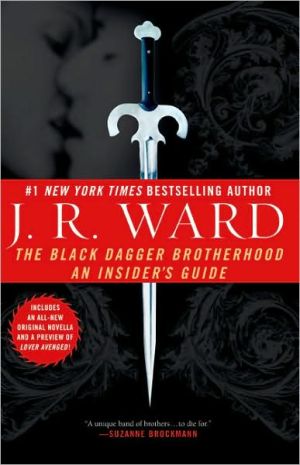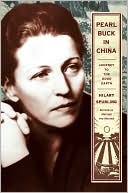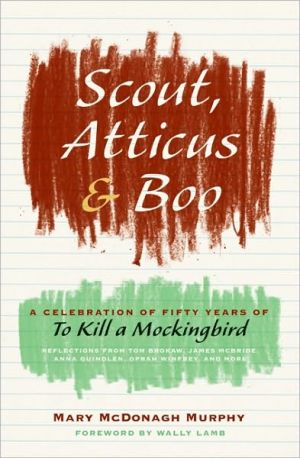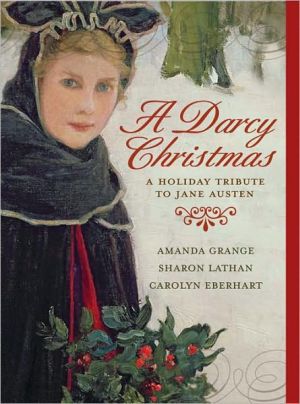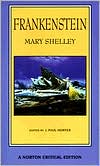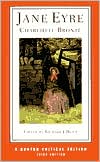Signing the Body Poetic: Essays on American Sign Language Literature
This unique collection of essays, accompanied by a pioneering DVD, at last brings a dazzling view of the literary, social, and performative aspects of American Sign Language to a wide audience. The book presents the work of a renowned and diverse group of deaf, hard-of-hearing, and hearing scholars who examine original ASL poetry, narrative, and drama. The DVD showcases the poems and narratives under discussion in their original form, providing access to them for hearing non-signers for the...
Search in google:
"This is a startlingly original collection, challenging readers to think well beyond normative contours of the literary text toward a living art of the embodied sign. A significant contribution to literary, performance, and Deaf culture studies, Signing the Body Poetic will make us all see differently."—Della Pollock, editor of Remembering: Oral History Performance"Signing the Body Poetic is both a book and an event—a long-anticipated work that questions and recasts some of our most embedded definitions of poetry and other language arts. The work of several generations of signing poets has made a place for gesture that eliminates once and for all the hegemony of the spoken word as the single determinant of poetry and language performance. That is the accomplishment analyzed and celebrated in these pages and in the accompanying DVD that clearly shows the work at hand."—Jerome Rothenberg, coeditor of Poems for the Millennium: The University of California Book of Modern and Postmodern Poetry"Signing the Body Poetic is the first major scholarly work to celebrate and theorize American Sign Language artistic expression, ranging from poetry to theater and film. A must for anyone interested in contemporary poetry, drama, or literary theory."—Lennard J. Davis, editor of The Disability Studies Reader "Signing the Body Poetic brings new and productive dimensions to the phrase 'body of literature.' This impressive collection details the aesthetics, the epistemological importance, and the cultural life of American Sign Language literature in clear, accessible prose. Close analyses of key texts in/as performances are enhanced by the accompanying DVD, itself an invaluable resource. This collection will be useful for scholars and general readers interested in the complexities of literary production and reception."—Judith Hamera, author of Opening Acts and editor of The Sage Handbook of Performance Studies"This collection is as unique as ASL, merging linguistics, nonverbal communication, and performance both in the content of the chapters and in its form (text and DVD). Unlocking the performative dimension of ASL, it merges disciplines, communicative forms, and channels while demonstrating that our ability to communicate is not limited by the organs we use to do so but only by our ability to perform."—Michael L. Hecht, coeditor of Redefining Culture: Perspectives across the Disciplines
\ \ Signing the Body Poetic\ \ \ Essays on American Sign Language literature\ \ \ \ University of California Press\ \ \ Copyright © 2006\ \ The Regents of the University of California\ All right reserved.\ \ ISBN: 0-520-22976-2\ \ \ \ \ \ \ Chapter One\ \ \ Face-to-Face Tradition in\ the American Deaf Community\ Dynamics of the Teller, the Tale,\ and the Audience\ BEN BAHAN\ INTRODUCTION\ The brief DVD clip with which this chapter begins (clip 2.1), showing a duo\ performance of a "song" whose signs are arranged to a rhythmical cadence,\ is only one short moment in a long history of storytelling and performance\ in the American Deaf community. As long as Deaf people have congregated\ in schools, clubs, and homes, they have passed down cultural patterns, values,\ and beliefs in the DEAF WORLD from one generation to the next in\ something very much like an oral tradition. According to Goody (1992),\ "[T]he oral tradition consists of everything handed down (and ipso facto\ created) through the oral channel-in other words, virtually the whole culture\ itself" (13). As James Paul Gee (1983) recognizes, "[I]t sounds paradoxical\ to say so, but ASL [American Sign Language] exists in an 'oral' culture,\ a culture based on face-to-face signed interaction, with writing and middleclass\ literacy playing little or no role in much of the heart of the community.\ Like many other suchcultures, it has an active tradition of folklore and\ performance-centered 'oral' (signed) narrative, encapsulating traditional\ values, and passed down from generation to generation" (232).\ While similarities abound between signed and oral traditions, the Deaf\ community is not a purely oral community; rather, it exists along an oral-literate\ continuum. In many parts of the world, oral subcultures exist within\ a literate majority culture (Ong 1982; Edwards and Sienkewicz 1990; Goody\ 1992). In these communities, it is not surprising to find an oral-literate continuum\ (Edwards and Sienkewicz 1990). There are people who thrive on\ oral traditions when among members of their subculture but who can also\ behave as members of the literate majority culture. Those people are likely\ to be bilinguals. In such cross-cultural contact situations, the notion of\ "pure" orality is probably nonexistent. "Moreover, elements of the oral tradition,\ like folktales, inevitably get written down, whereas elements of the\ written tradition are often communicated orally" (Goody 1992, 13). The\ DEAF WORLD is obviously a minority culture situated within a majority\ culture, so the notion that it is primarily an oral culture-without any influence\ from literate culture-is misleading; however, the situation is more\ complicated than it seems.\ There is no widespread use of a written form in the primary face-to-face\ language of the community-ASL. In addition, most, if not all, members\ of the DEAF WORLD are ASL-English bilinguals to varying degrees (see\ Grosjean 1996), so there is some access to literate cultural knowledge. Moreover,\ because Deaf people are also members of the majority culture (i.e.,\ American culture), they interact on a daily basis with English-speaking\ people by communicating with them in a variety of ways: speaking or writing.\ Although literate knowledge is accessed in a language (English) that is\ not primarily used in face-to-face situations among members of the DEAF\ WORLD, we cannot ignore the relationship between the two cultures and\ their influences on each other. It is safe to say, then, that many of the patterns\ of oral and signed face-to-face traditions are similar and that only the\ medium is different. To be more precise in reflecting this difference of\ medium, this chapter will use the term face-to-face tradition.\ The synthesis of thoughts and observations reported in this chapter\ sprang from my role as a storyteller and lifelong participatory member of\ the DEAF WORLD. I have had the opportunity of exchanging insights\ with other storytellers, poets, and performers over more than twenty years.\ From these exchanges, I have come to recognize distinct patterns in our literary\ practices, themes, and genres. Here I offer an overview of these literary\ patterns in the DEAF WORLD.\ The Face-to-Face Tradition in Deaf Culture\ To gain some insight into the sociohistorical environment of the face-to-face\ tradition of Deaf culture, let us turn to the experience of Gilbert Eastman\ (professor emeritus at Gallaudet University and one of the founding\ members of National Theatre of the Deaf) (pers. comm., June 1999). He\ remembers being exposed to the types of stories discussed in this chapter\ while growing up at American School for the Deaf (ASD) in Hartford,\ Connecticut, in the 1940s. He vividly remembers watching with awe as\ older kids performed various stories, especially when he was a Boy Scout.\ His troop would go camping every year, and at night the boys would gather\ around the campfire and share stories. The older Scouts would tell and\ retell mystery stories, ghost stories, scenes from movies, Deaf-related experiences,\ jokes, sign play, and ABC stories. Bear in mind that the "older\ tellers" in Eastman's childhood memories were boys who were enrolled in\ school in the early to mid-1930s. They must have learned the craft of storytelling\ and tales from someone before them. One might wonder: Just\ how far back did those ASL story performances at ASD go? Interestingly,\ we are fortunate to have one of the earliest records of a signed performance\ captured in a film project by the National Association of the Deaf (NAD)\ that was produced between 1910 and 1920. The film series contains various\ lectures, performances, poems, stories, songs, and narratives of personal\ experience. One storyteller in this series, John B. Hotchkiss, a professor\ of English and history at Gallaudet, was an ASD graduate. In one of\ his performances, a narrative of personal experience entitled "Memories of\ Old Hartford," he reminisced about his days at ASD as a child (in the early\ 1860s) and his encounter with the famed French Deaf educator Laurent\ Clerc. He recounted various stories about Clerc, who was already retired\ but living nearby at the time Hotchkiss was at ASD. In one instance, he\ portrayed Laurent Clerc lecturing about how the subtle difference in English\ word order makes a big difference in meaning, focusing on the meaning\ difference between the two phrases "eat to live" and "live to eat." In\ any case, we know that since Hotchkiss's time Deaf storytellers have been\ passing on their stories, culture, and identity through a tradition that has\ been kept alive through face-to-face events. We don't know exactly which\ ASL literature genres existed in the early days, but we know from the NAD\ films that at least the following genres go back to the turn of the twentieth\ century: narratives of personal experience, lectures, and translated songs,\ poems, and stories.\ According to Gilbert Eastman, the environment of sharing stories was\ not limited to those inside a school for the deaf. There were opportunities\ for contact among regional schools for the deaf through interscholastic\ meets (e.g., in football, basketball, and track). He recalls many evenings,\ before or after the games, when students from different schools would\ share stories in a snack bar or dance hall. Thus it is apparent that stories\ were disseminated across a region of several states. It was not uncommon\ for people to learn new stories from such gatherings and bring them back\ to their local school. These gatherings also gave budding storytellers the\ opportunity to try out their craft with a new audience and to establish a\ reputation as storytellers. Eventually these signers would graduate and\ enter local Deaf clubs and different associations in the region, such as the\ American Athletic Association of the Deaf, currently known as USA Deaf\ Sports Federation, NAD, and the National Fraternal Society of the Deaf.\ At these regional affairs, they would encounter Deaf people they had met\ at interscholastic meets and be prompted into performing.\ So in essence all these places-schools, interscholastic meets, Deaf clubs,\ Deaf associations, and regional or national tournaments or conferences-have\ served as settings that perpetuate face-to-face cultural transmission.\ Often performances have sprung up at these locations as a by-product of\ the gatherings. Sometimes the performances themselves have been the goal\ of the gatherings (as in literary societies and theater groups).\ THE TELLER, THE TALE, AND THE AUDIENCE\ Everyone in the DEAF WORLD can tell stories and share ideas and personal\ experiences. However, only a few can do so with such skill that they\ are often called upon to perform. Those with this special talent are often\ called "smooth signers." A smooth signer is someone who as a language\ artist can weave a story so smoothly that even complex utterances appear\ simple, yet beautiful.\ Often these smooth signers end up becoming the community's storytellers\ and/or poets and are encouraged by the culture to show their craft in\ a more formalized manner. The culture often dictates, through its encouragement\ and requests for repeated performances, the kinds of stories/poems\ that the smooth signers will end up spinning. The three components of the\ face-to-face tradition -the teller, the tale, and the audience-are so intertwined\ that it is almost impossible to describe one without the others. The\ following sections will address each component and show how all the components\ complement each other.\ THE TELLER\ The Making of a Storyteller/Poet\ One might wonder how "smooth signers" or storytellers and poets develop\ in oral cultures. According to Edwards and Sienkewicz (1990), some people\ are apparently born with the gift of being a good talker: "Good talkers\ have particular expertise; they have a knowledge of a specialized language\ and body of information and have often undergone a lengthy process of\ learning and preparation. Yet this training can be of little value if the\ apprentice has no basic aptitude" (17). Okpewho (1992) similarly states that\ "[o]ne's mind or nature has to be predisposed toward art before the skill\ can successfully take root" (21). With this predisposition in place, storytellers\ still have to be "made"; they must go through an apprenticeship to\ learn the craft. There are two general ways in which one can be apprenticed:\ formal training or informal training. Formal training involves a more\ structured approach toward apprenticeship: one is selected to attend a\ "school" that has master storytellers as teachers who provide specific training\ and guidance for future storytellers. In other communities where storytellers\ are developed informally, apprentices learn and work alongside\ master storytellers (Okpewho 1992), and apprentices undergo a longer\ period of training or long-term exposure to experienced storytellers/performers\ than they would in formal training. In the course of learning\ through either approach, apprentices "inherit" and learn various specialized\ techniques: controlling the pauses and tempos in stories, using parallelisms,\ repetitions, and digressions effectively, and so on. They also learn\ from master storytellers a core of narratives that employ basic themes or\ combinations of themes that are meaningful and central to the culture and\ audience. Master storytellers pass down technical and artistic uses of language\ that were learned from storytellers before them. In sum, smooth\ signers undergo a period of preparation.\ The Making of ASL Storytellers\ ASL storytellers appear to show patterns of the kind described above. From\ a very young age, they tend to be exposed to various adult signers in their\ community (including their parents) and to have the opportunity to observe\ various smooth signers performing stories, monologues, and, in some cases,\ poems. Once they go to school, most of them have the opportunity to interact\ with smooth signers employed at their school. More importantly, they\ have the opportunity, from a very young age, to play out the role of a storyteller\ and retell the stories they have heard to their peers. Their peers probably\ beg them to tell more stories. To do that, they have to become more active\ in remembering stories and/or inventing stories on the spot. In their telling,\ they experiment with various techniques that they have absorbed from\ watching adult smooth signers in action. This cycle goes on until they reach\ adulthood. Then they begin testing their work with a larger audience outside\ the school, at clubrooms, associations, and various Deaf social events.\ In essence these storytellers become the culture's historians, teachers,\ and entertainers (Okpewho 1992; Lane, Hoffmeister, and Bahan 1996).\ They pick up various styles and nuances that go into telling a story from\ Deaf adults who have picked it up from Deaf adults before them. Their\ work combines elements of various other signers, picked up along the way,\ and, more importantly, their own "signature." All artists borrow ideas,\ some of which can be traced, yet each artist adds his or her own personal\ flair. They are also passing down the culture's heritage by sharing the stories\ they have heard from the adults in their communities, even if they\ modify the story by adding their own personal touch. In this sense, they\ are recording life histories of Deaf people and themselves in particular.\ Storytellers also teach Deaf people by giving them a sense of identity and\ a sense of belonging, as well as providing ways of interpreting and comprehending\ the world collectively, thereby perpetuating the survival of their\ culture. Each tale has embedded within it messages for ways of behaving\ and strategies for surviving as a member of a minority culture in a world surrounded\ by others with different cultural values and world knowledge (see,\ e.g., Padden and Humphries 1988; Lane, Hoffmeister, and Bahan 1996).\ Finally, storytellers' primary goal appears to be to use their gift as language\ artists to entertain members of the audience. Their role as performers\ is tied to how they bring the story to the audience. This puts the tellers\ in the position of controlling how they want the stories to unfold.\ Learning Controls in Storytelling\ A good storyteller needs to be adept at synthesizing different kinds of controls,\ such as the control of language, of paralinguistic cues, of selection of\ tales, and, finally, of the audience (Bahan 1994; Lane, Hoffmeister, and\ Bahan 1996). Control of the first two-language and paralinguistic cues-falls\ in the domain of language use. In the control of language, a teller must\ attend to a wide spectrum of linguistic elements, from the smallest units,\ such as handshape or eye gaze location, to those on the grammar and the discourse\ level. The teller deploys linguistic units by controlling various paralinguistic\ elements, including the rhythm, tempo, and pause mechanisms of\ the story. The teller also exploits facial expressions and nonverbal expressions\ (which may be used for imitation, among other things) to convey additional\ messages in an attempt to control the mood and trigger emotions from the\ audience for various episodes in the story. In essence, these two types of control\ enable the teller to pay attention to the aesthetic use of language.\ However, the task does not end there. The teller has to select an appropriate\ story. Each teller has a repertoire of stories (and, for some, poems).\ Some of these stories are suitable only for particular members of the audience\ and particular locations. Some of the stories are still in various stages\ of development and have not yet been fully disclosed. There are risks of\ releasing these stories to an unreceptive audience. The teller has to evaluate\ the situation he or she is facing (e.g., the audience and location) and proceed\ to select the stories and tell them. For example, a storyteller would risk\ inappropriate story selection if he told a detailed story of hunting down and\ skinning a bear to an audience filled with animal rights advocates.\ Tellers also need to monitor the members of the audience from time to\ time to see if they are engaged in the performance before venturing into\ disclosing work under construction. If their story selection is irrelevant for\ the audience/location or simply not good, then they are bound to fail.\ There have been instances where a teller reportedly misjudged an audience\ by assuming that most of the people in the audience were fluent signers,\ able to follow a high-speed montage composed of rapidly produced\ signs. Especially in a mixed audience of Deaf and hearing people, and of\ signers and nonsigners using interpreters, gauging the audience's ability to\ follow the work may be difficult. The teller may realize upon gauging the\ audience in the middle of a story that they are not following him or her\ and then digress in order to work the audience back into the performance.\ (Continues...)\ \ \ \ \ \ \ \ Excerpted from Signing the Body Poetic\ \ Copyright © 2006 by The Regents of the University of California.\ Excerpted by permission.\ All rights reserved. No part of this excerpt may be reproduced or reprinted without permission in writing from the publisher.\ Excerpts are provided by Dial-A-Book Inc. solely for the personal use of visitors to this web site.\ \
Contents of the DVD Foreword—William C. Stokoe Preface: Utopian Gestures—W.J.T. Mitchell Acknowledgments Users' Guide1. Introduction H-Dirksen L. Bauman, Jennifer L. Nelson, Heidi M. RosePART ONE: FRAMING ASL LITERATURE2. Face-to-Face Tradition in the American Deaf Community: Dynamics of the Teller, the Tale, and the Audience—Ben Bahan3. The Camera as Printing Press: How Film Has Influenced ASL Literature—Christopher B. Krentz4. Deaf American Theater—Cynthia PetersPART TWO: THE EMBODIED TEXT: "WRITING" AND VISION IN ASL LITERATURE5. Getting out of Line: Toward a Visual and Cinematic Poetics of ASL—H-Dirksen L. Bauman6. Textual Bodies, Bodily Texts—Jennifer L. Nelson7. The Poet in the Poem in the Performance: The Relation of Body, Self, and Text in ASL Literature—Heidi M. Rose8. ASL Literature Comes of Age: Creative "Writing" in the Classroom—Liz WolterPART THREE: THE POLITICAL TEXT: PERFORMANCE AND IDENTITY IN ASL LITERATURE9. "If there are Greek epics, there should be Deaf epics": How Protest Became Poetry—Kristen C. Harmon10. Visual Screaming: Willy Conley's Deaf Theater and Charlie Chaplin's Silent Cinema—Carol L. Robinson11. Hearing Things: The Scandal of Speech in Deaf Performance—Michael DavidsonAfterword Carol A. Padden Appendix A: Time Line of ASL Literature Development Appendix B: ASL Video References Contributors Index

